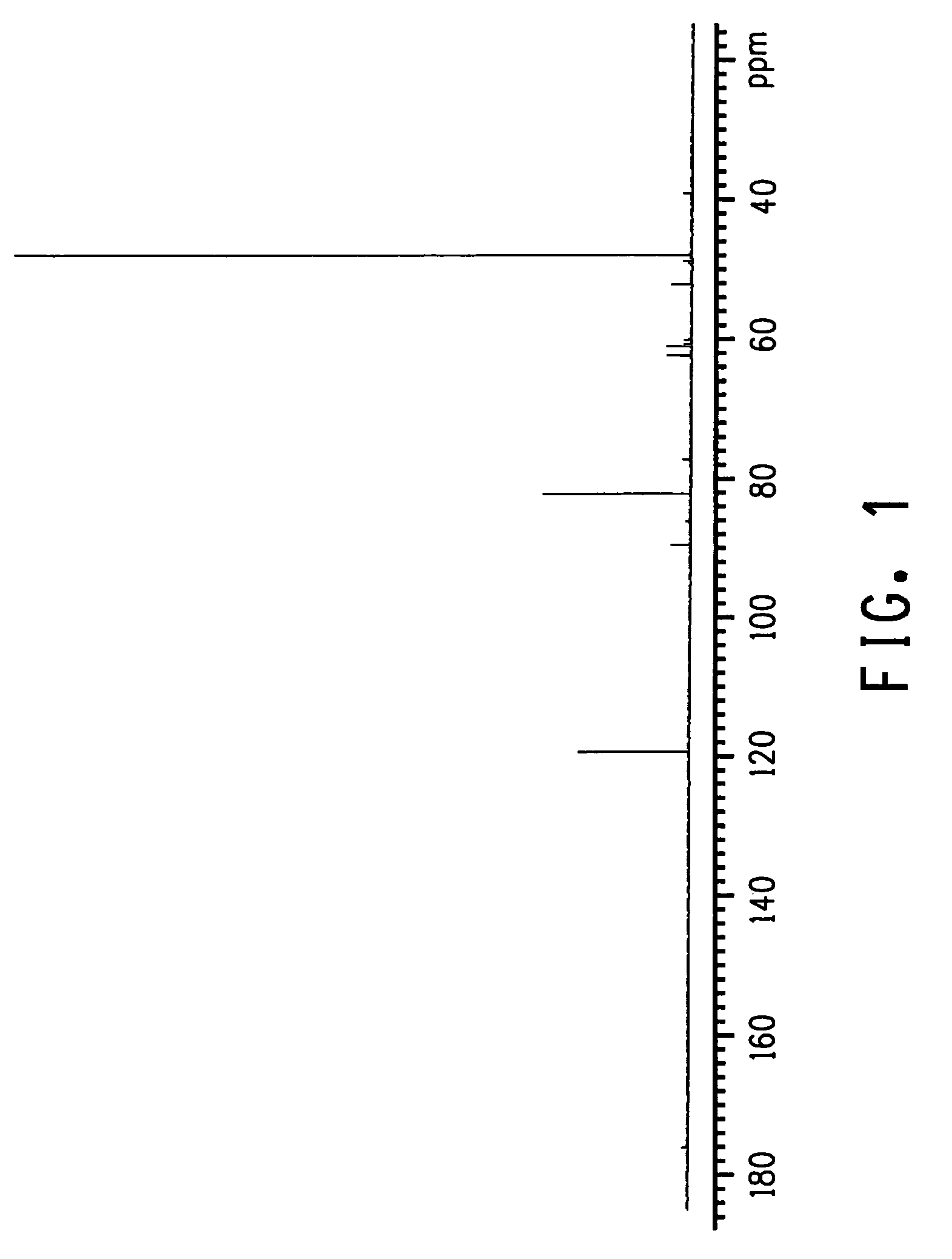Process for the synthesis of glycolonitrile
a glycolonitrile and synthesis technology, applied in the field of glycolonitrile synthesis, can solve the problems of unreacted free formaldehyde after 2 hours of reaction time, not disclosed in the pre-treatment of concentrated aqueous formaldehyde feed prior to jacobson, and lack of a glycolonitrile production method, etc., to achieve the effect of minimizing the decomposition of glycolonitril
- Summary
- Abstract
- Description
- Claims
- Application Information
AI Technical Summary
Benefits of technology
Problems solved by technology
Method used
Image
Examples
examples
Analytical Methodology
[0058]The reaction product mixtures were analyzed by the following HPLC method. Aliquots (0.01 mL) of the reaction mixture were added to 1.50 mL of water, and analyzed by HPLC (HPX 87H column, 30 cm×7.8 mm; 0.01 N H2SO4 mobile phase; 1.0 mL / min flow at 50° C.; 10 μL injection volume; RI detector, 20 min analysis time). The method was calibrated for glycolonitrile at a series of concentrations using commercially available glycolonitrile purchased from Aldrich.
Quantitative 13C NMR Analysis
[0059]Quantitative 13C NMR spectra were obtained using a Varian Unity Inova spectrometer (Varian, Inc., Palo Alto, Calif.) operating at 400 MHz. Samples were prepared by taking 3.0 mL of the reaction product along with 0.5 mL of D2O in a 10 mm NMR tube. 13C NMR spectra were typically acquired using a spectral width of 26 KHz with the transmitter located at 100 ppm, 128K points, and a 90-degree pulse (pw90=10.7 microseconds at a transmitter power of 56 db). The longe...
example 1
Pre-Heating 90% of Formaldehyde
[0064]Approximately 10.18 g of 52 wt % aqueous solution of formaldehyde (<1% methanol, DuPont) was mixed with 12.81 g of water, and the slurry was heated to about 76° C. for about 40 min until the mixture became a clear homogeneous liquid solution. The solution was allowed to cool to ambient temperature and remained a homogeneous liquid. 0.16 mL of 16.7 wt % aqueous NaOH solution was then added to the formaldehyde solution. 1.56 g of the resulting solution (23 wt % formaldehyde) was placed in the reaction vessel, and the remainder was used for the continuous formaldehyde feed.
[0065]The reaction vessel, equipped with stirring, was placed within an oil bath maintained at 55° C. The approximately 12-inch section of the formaldehyde feed line ( 1 / 16″ OD (about 1.6 mm)×0.040″ ID (about 1.02 mm)) directly preceding the inlet to the reaction flask was heated to 120° C., and the reactants were then each continuously pumped into the reaction vessel over a perio...
example 2
Pre-Heating 100% of Formaldehyde
[0068]Approximately 10.18 g of 52 wt % aqueous solution of formaldehyde (<1% methanol, E.I. DuPont de Nemours) was mixed with 12.81 g of water, and the slurry was heated to about 76° C. for about 40 min until the mixture became a clear homogeneous liquid solution. The solution was allowed to cool to ambient temperature and remained a homogeneous liquid. 0.14 mL of 16.7 wt % aqueous NaOH solution was then added to the formaldehyde solution. The resulting solution (23 wt % formaldehyde) was used for the continuous formaldehyde feed.
[0069]The reaction vessel, equipped with stirring, was charged with a mixture of 0.18 g of HCN in 3.4 g of water and then placed within an oil bath maintained at 55° C. The approximately 12-inch section of the formaldehyde feed line ( 1 / 16″ OD×0.040″ ID) directly preceding the inlet to the reaction flask was heated to 120° C., and the reactants were then each continuously pumped into the reaction vessel over a period of about...
PUM
| Property | Measurement | Unit |
|---|---|---|
| temperature | aaaaa | aaaaa |
| wt % | aaaaa | aaaaa |
| wt % | aaaaa | aaaaa |
Abstract
Description
Claims
Application Information
 Login to View More
Login to View More - R&D
- Intellectual Property
- Life Sciences
- Materials
- Tech Scout
- Unparalleled Data Quality
- Higher Quality Content
- 60% Fewer Hallucinations
Browse by: Latest US Patents, China's latest patents, Technical Efficacy Thesaurus, Application Domain, Technology Topic, Popular Technical Reports.
© 2025 PatSnap. All rights reserved.Legal|Privacy policy|Modern Slavery Act Transparency Statement|Sitemap|About US| Contact US: help@patsnap.com



